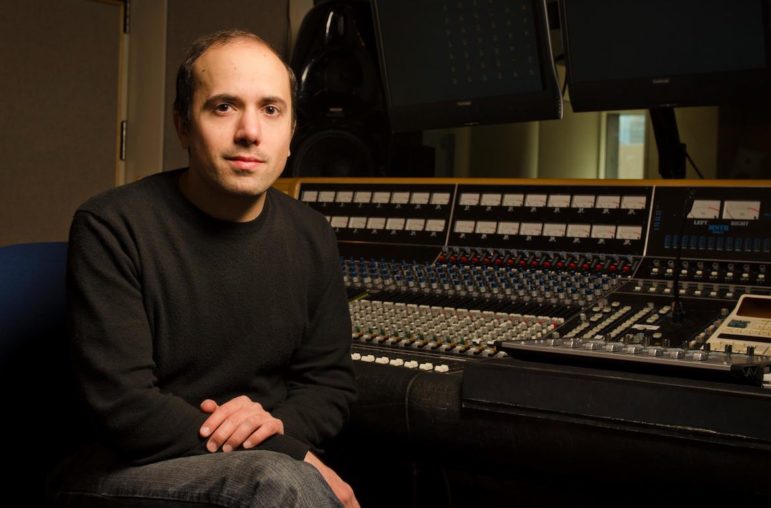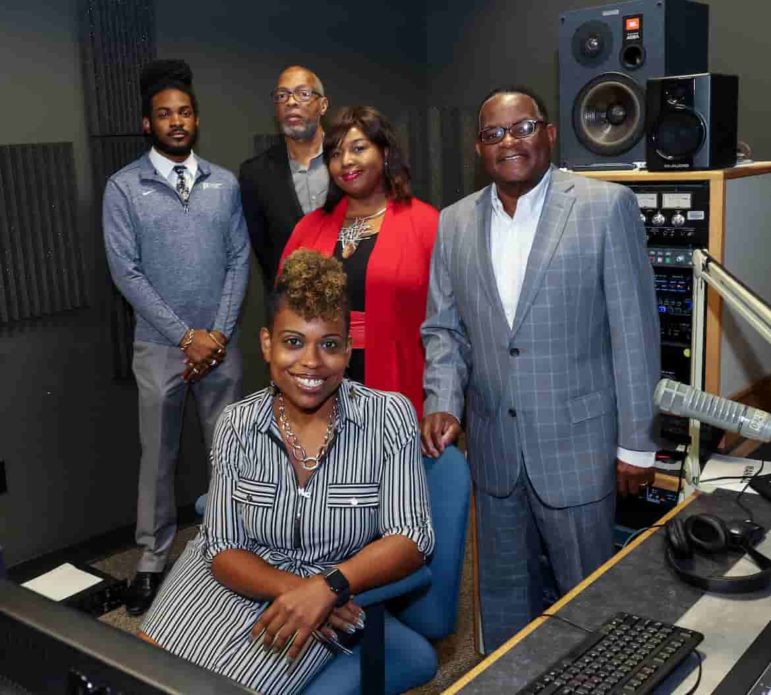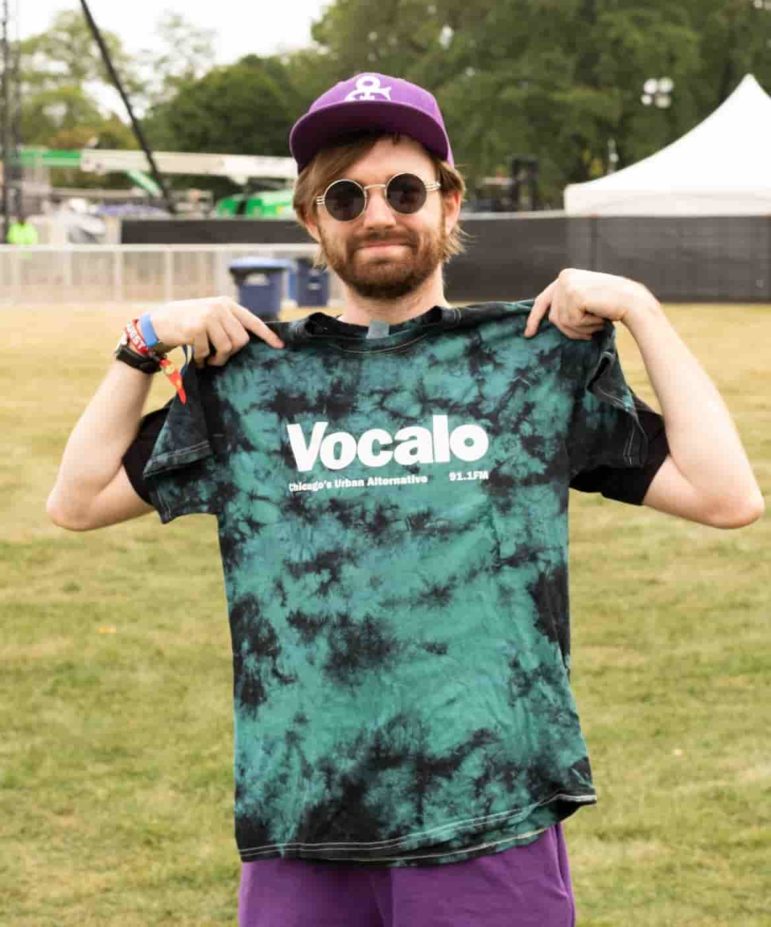New funding expands reach of public radio’s hip-hop/R&B format

Hip-hop artist Zed Kenzo performs at the Radio Milwaukee Music Awards in December 2017.
Three more public radio stations will adopt a CPB-backed music format designed to appeal to younger and more diverse audiences.
The Urban Alternative format, which focuses on hip-hop and R&B with a dose of local community engagement, will expand next year to 88Nine Radio Milwaukee; WJSU in Jackson, Miss.; and Minnesota Public Radio’s The Current in the Twin Cities, partnering with KMOJ, a local station already serving communities of color. Each station received a two-year grant from CPB.
These stations will join Chicago’s Vocalo, which pioneered the format, and three other stations that have taken on Urban Alternative in recent years. The newcomers will conduct market research and add staff to roll out the format on a range of platforms, including their main FM signals, digital radio channels, apps and online streams.
“The Urban Alternative format has been built by and for a new generation of public radio listeners — a younger, multicultural community that is creating its own public media sound,” said Kathy Merritt, CPB’s senior VP of radio, journalism and CSG services, in a Sept. 14 press release. “CPB is proud to support the expansion of this format, in which the stations are meeting the music and information needs of young, diverse audiences as trusted partners.”
Urban Alternative stations have developed their own localized takes on the format but all aim to attract listeners ages 18 to 44. The three new stations expect to roll out Urban Alternative by the middle of next year and are committed to continuing with the format for at least three years after the grants end.
As the newcomers to Urban Alternative gear up, stations that received funds in the first round are still finding their legs with the new format. In Denver, Rocky Mountain Public Media’s The Drop began as a web stream and on an HD radio channel in March 2019. Since its debut on a primary FM signal in February, it reached a 0.7 average–quarter-hour rating and a cume audience of 69,800 in August.
WNSB in Norfolk, Va., which airs Urban Alternative full-time on its primary FM signal, hit a 2.0 market share four months after its launch in December 2019. And Houston’s KTSU, which airs both jazz and Urban Alternative on its primary FM, reached a 0.9 AQH rating and a cume of 163,100 in August.
A Twin Cities partnership
“We couldn’t be more excited,” said Kevin Sucher, executive director of 88Nine Radio Milwaukee. The station’s Urban Alternative music stream will embrace the “full spectrum of Black music,” Sucher said, including jazz, soul, R&B, hip-hop and funk.
During some dayparts, Radio Milwaukee already airs music that meshes with Urban Alternative. Its Friday-night show Rhythm Lab Radio, hosted by Digital Director Tarik Moody, is “kind of a snapshot of what the full programming will look like,” Sucher said.

The station will use its $450,000 CPB grant to add a program director, production manager, community engagement director and on-air talent. Station Director Jordan Lee will oversee the programming, which will air full-time on a digital stream and during some slots on Radio Milwaukee’s main FM signal. Radio Milwaukee will make way for Urban Alternative on its HD2 digital channel by moving a stream of local music to HD3.
In the Twin Cities, Minnesota Public Radio’s The Current will also build on existing programming to develop its take on the Urban Alternative format. The Triple A station will put its $400,000 grant toward relaunching its Purple Current stream, which was created in tribute to Prince after his death in 2016.
The stream is now “very focused on Prince and the Minneapolis sound,” said David Safar, managing director of The Current. “There’s an opportunity for that to continue but for us to do what an artist like Prince would have wanted, which is to cultivate the next generation of musicians and artists and creators.”

The resulting mix will help fill a hole in Twin Cities radio formats left by the signoff of Go 95.3, an R&B and hip-hop station that was sold to Educational Media Foundation last year. For the Current, Safar said, Urban Alternative is “a broader initiative to think about not just how we can be another streaming source for music fans, but also, how can we be involved with the community in a way …. where people can convene and come together as music fans around music that doesn’t have necessarily a place in public media and doesn’t have a place at this point necessarily on commercial media in this market.”
“We’ve got a diverse mix of people who tune in and who support us financially … but it could be more diverse,” said MPR President Duchesne Drew. “It could be deeper in some communities, and we can have more people starting their day having had some interaction with us. But that requires us to do more on the programming front to be worth their time and energy.”
By adopting Urban Alternative, The Current is seeking not only to expand its own audience but to raise the profile of KMOJ. The Minneapolis community radio station was interested in Urban Alternative when CPB announced the first funding round but was “grossly underfunded” and couldn’t participate, said GM Freddie Bell. This time, MPR approached KMOJ about a partnership that would make the format workable for both stations.
“It seemed like a perfect fit to not only serve our community but grow our audience at the same time,” said Bell, a longtime friend of MPR’s Drew.
KMOJ’s Urban Alternative format will center on The Ice, now a hip-hop stream on its HD2 digital channel. The stream’s audience has been growing slowly, and Bell hopes KMOJ can accelerate that growth and shore up the station’s long-term sustainability through its collaboration with The Current.
‘Find where they are and go to them’
In Jackson, Miss., CPB’s $450,000 grant will help WJSU reach out to a brand-new audience. “The number one question I get from students is ‘When are you going to play music that I can relate to?’” said GM Anthony Dean.
Licensed to Jackson State University, a historically Black school, WJSU now airs jazz and NPR news. Dean learned about Vocalo and the Vibe, KTSU’s Urban Alternative programming, from colleagues serving on a CPB Community Service Grant panel.

Jackson is home to several other colleges and universities, “so I said, ‘This is a great opportunity to make public radio appealing to a young audience,’” Dean said. “And then we looked at the demographics that they want to reach with Urban Alternative, and I said, ‘That’s perfect.’”
Dean said WJSU will devote a “significant amount of time” to Urban Alternative on its main FM signal: 10 a.m.–6 p.m. weekdays, plus weekend dayparts when it will blend with the smooth jazz now airing. It will also be available 24/7 on the station’s HD2 channel.
Dean anticipates that the format will debut by May. “We’re going to hire our on-air announcers from the community, people who have a pretty big following,” he said. The format will be named “Thee Cool,” a reference to Jackson State’s motto, “Thee I Love.”
As the existing Urban Alternative stations push to attract an audience, they’re finding that new approaches to marketing and fundraising are necessary to make inroads. Programmers from the stations shared advice Sept. 15 at a panel discussion during the Public Radio Program Directors’ virtual conference.
At KTSU, programmers have found that they need to be proactive. With younger potential listeners, “you have to take the engagement to them,” said Madd Hatta, The Vibe’s content director. “You have to find out where they are and go to them. You can’t sit around and wait like I think a lot of radio stations are doing, which I think is absolutely wrong … and hope that they’re going to listen and be a participant in your radio station. You have to actively go where they are and try to engage them on their level.”
The need for innovation also extends to fundraising, according to the PRPD panelists. When it first launched, Rocky Mountain Public Media’s The Drop held on-air fund drives at the same time as KUVO, RMPM’s jazz station. But it wasn’t getting many pledges, according to Nikki Swarn, The Drop’s GM and PD.
Younger listeners don’t want to call a phone number and share credit card information, Swarn said. “They’re like, ‘No, no thanks. I’m going to pass on that,’” she said. “So we have to come to them and say, ‘OK, can you text-to-give? Can you give through your Facebook? Can you social give? What ways can we meet you?’”

Swarn told Current that The Drop has raised 97% of its donations through text messaging and is just getting started asking for gifts via Facebook and Instagram. The station has also promoted its “I Got $5 On It” campaign at live shows. “We’re using experiences to drive and inform how we create our membership strategy,” Swarn said.
Vocalo in Chicago has had success with a “tip jar” presented when donors give online to WBEZ, Vocalo’s sibling station under Chicago Public Media. “We actually get quite a bit of bread,” said Ayana Contreras, content director for Vocalo. “It’s just an opportunity to introduce an adjacent audience to us.”
Vocalo also sought donations by designing “the most expensive T-shirt Chicago Public Media had ever made,” Contreras said.
“I made it super exclusive, not a lot of shirts,” Contreras said. “… I know my audience. They would rather have a dope shirt, and they will pay for a dope shirt, than us have 500 million generic giveaway shirts, which is what public radio generally does. They have OK shirts. I’m like, ‘What if we have really dope shirts?’”
Corrections: An earlier version of this article gave an incorrect amount for the CPB grant to WJSU. The station received $450,000, not $350,000. It also included the incorrect title for Ayana Contreras, content director for Vocalo.





